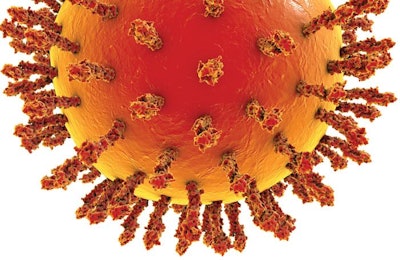
People outside of the poultry industry are now better able to understand the formation of new avian influenza strains after experiencing the COVID-19 pandemic, said Dr. Julie Helm, Clemson University poultry veterinarian and South Carolina National Poultry Improvement Plan (NPIP) inspector.
Speaking during a recent podcast, Helm addressed the current highly pathogenic avian influenza (HPAI) outbreak, as well as another widespread outbreak in 2015 and a smaller one that hit South Carolina in 2020. She said she was confident the particular strain of virus that has circulated in North America this year will be eliminated from the U.S., just like the strain that hit seven years ago is no longer in the United States, but a new variant still emerged.
The podcast, titled “Surviving HPAI,” was hosted by Balchem.
Helm said she believes the threat of avian influenza in North America will be a constant, and the threat is always there for low pathogenic forms of the avian influenza to mutate into a highly pathogenic strain.
Viruses constantly change through mutation, and sometimes new mutations result into a new variant of the virus. The general public didn’t understand that about avian influenza during prior outbreaks, but now that they have seen how the omicron variant of COVID-19 came to be as a result of mutation, it is more understandable, she said.
“When I explain this to people, it’s easier that we’ve gone through COVID, because your layperson understands now different variants, isolation, vaccination, all those terms we’ve always had to explain. They get it now with COVID. So, I say this is like COVID, brand new strain, the birds are not immune to it, they get infected, and then start spreading it,” Helm explained.
So far in 2022, HPAI has affected more than 40 million head of commercial and backyard poultry in the United States, and more than 2 million head of commercial poultry in Canada. However, the spread of the virus has slowed, with the last commercial case in Canada being confirmed on July 9 and the last commercial case in the United States being confirmed on June 9.
Read our ongoing coverage of the global avian influenza outbreak.



.jpg?auto=format%2Ccompress&fit=crop&h=167&q=70&w=250)














